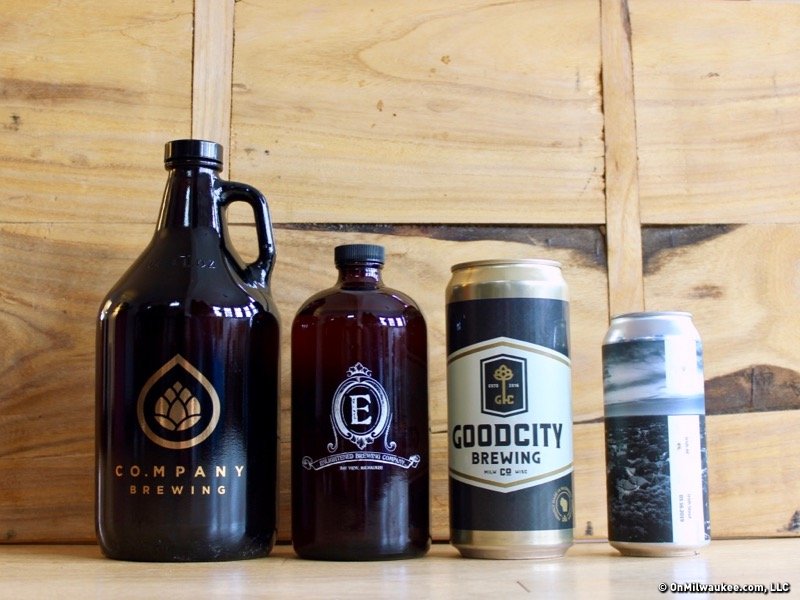"Bar Month" at OnMilwaukee is brought to you by Miller Brewing Company, calling Milwaukee home since 1855. For the entire month of March, we're serving up fun articles on bars, clubs and beverages – including guides, the latest trends, bar reviews, the results of our Best of Bars poll and more. Grab a designated driver and dive in!
When you take beer home from a brewery in a growler or crowler, how long do you let it sit before drinking? If you’re waiting more than a day or three, there’s a good chance the beer you pour from that can won’t be as delicious as what poured from the tap.
Beer is a lot like food. It has a shelf life. And every hour that a beer exists outside of a controlled environment, it’s degrading, some more quickly than others.
"We tell people to keep it cold and drink it fresh," says Simon McConico of Vennture Brew Co., where beer can be purchased in 16-ounce mini-crowlers (which look a lot like the cans you'd buy in the store). "That means drink it right away or in a day or two."
What that doesn’t mean is: "Keep it in your fridge for a week or two."
McConico says they’ve seen photos – some published on Untapped – from folks who’ve kept their crowlers for a more extended period of time. The photos showcase a beer that’s degraded past its prime. It’s color is darker, and it’s flavor … well, it’s pretty much guaranteed to be less-than-amazing.
Growlers are the long-time standard, but they’re not great
Maintaining the quality of that beer after it leaves the premises is a top priority for brewers of all stripes. Ultimately, they want their beer to taste as good as possible, regardless of when – or where – you consume it.
For as long as beer has existed, growlers – and containers like them – have been used to transport beer. The glass is traditionally dark, so they filter out (most) light; and the covers will help to retain carbonation (for a short period of time). But, in the end (when filled from a tap), they’re really just big glorified pint glasses with a cover on top.

"Consumers want to be able to take the beer home," notes Kevin Wright of Third Space Brewing. "And growlers were created so people could do that. Before more sophisticated packaging was widespread, that’s how people transported the beer from place to place. But not enough people understand the quality that’s compromised over time."
In response, brewers have looked for alternatives that do a better job preserving beer. Among them is the Crowler, a large format (32 ounce) aluminum can which is filled on premise. They’re sealed (better than growlers) and they keep out all light. They can also be more easily recycled.
Technically, they’re better than growlers filled from a tap. But, in most cases, they still won’t keep beer fresh for very long. Here’s why.
Crowlers aren’t cans
Well, they're technically cans. But they're generally used and filled differently from cans you find on store shelves.
"Flavor stability, aroma, color … they’re all contingent upon very specific conditions," says Kevin Wright of Third Space Brewing. "And oxygen is the driver for all flavor reactions. When beers degrade, oxygen is usually the biggest culprit. Lighter malts take on a wet cardboard aroma and flavor. Darker malts, which have natural antioxidant properties, can take on wine-like qualities."
IPAs are the first to degrade significantly. The bright notes of the hops and the volatile oils break down quickly and the aromas and flavors that make the beer shine are quickly destroyed. The same goes for lighter beers made with lighter malts, or beers brewed with adjuncts like wheat flakes or are highly prone to oxidation.
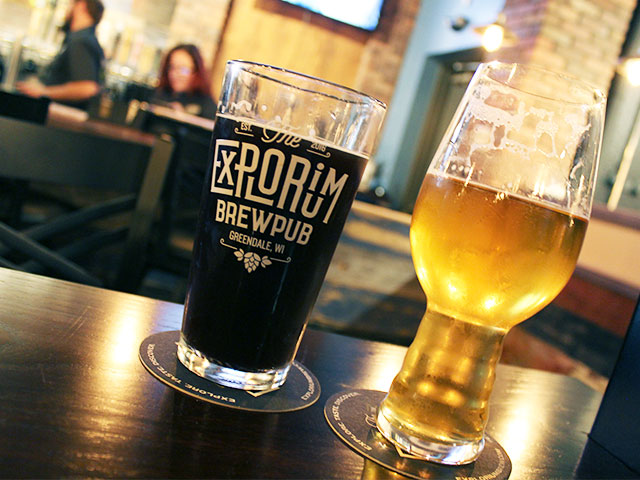
"Some places use crowlers," says Wright. "We do growlers, and I don’t like either of them. That’s why we’ve started selling canned beer in the brewery. If you’re taking it home, that’s really the best option."
His reasoning? You can only limit the oxygen that gets into a beer so much.
"All packaging and equipment is designed to limit oxygen as much as possible," he explains. "Anytime you’re filling a vessel with beer you’re at risk of disrupting flavor and color of the beer. And that can happen whether you’re running a $10 million canning line or a small manual bottling unit. And it’s really hard to control when you’re pouring from a tap."
Wright says they teach their bartenders overfill growlers, letting the beer flow out over the top of the container, before capping.
"From our testing, we’ve found that the foam – which is filled with carbon dioxide – fills the space where air would ordinarily be. And that minimizes oxidation."
McConico says they take extra precautions with their cans by not filling them from the tap. Instead, they’re filled in the brewery using a beer gun, which purges oxygen from the beer with carbon dioxide.
"If someone fills a crowler or growler from a tap, it’s harder to control the amount of oxygen that gets in," McConico says. "And a bad tap pour will give you a beer that degrades a lot more quickly."
It’s part of the reason brewers invest in state of the art canning equipment. They want to ensure that the shelf life of their canned or bottled product is as long as possible. Wright says they take all the precautions possible when canning their beer, including hitting it with a 120-day expiration … because even well-canned beer has its limitations.
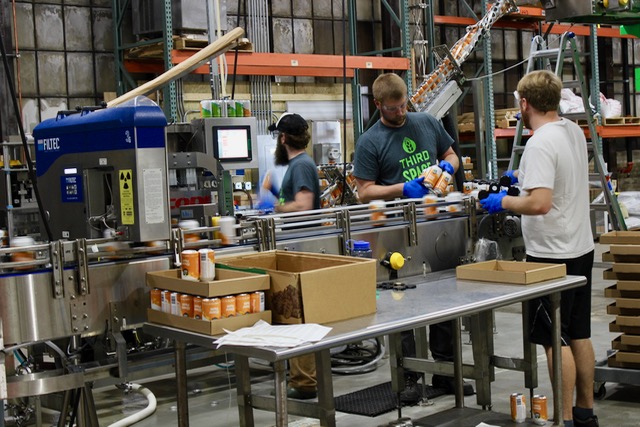
"The bigger and more expensive the canning line, the more control you have," says Wright. "The line we use does a double purge with carbon dioxide, so it minimizes the amount of oxygen that remains in the can. We also have a dissolved oxygen (DO) meter and we check all five of our fill heads on a consistent basis. Testing is critically important. And if you’re not testing, you really have no idea … I’ve had canned beer that tastes like it’s 6 months old after just two weeks."
We put them to the test
To give you a sense of the impact oxygen can have on beer, as well as to satisfy our sense of curiosity in terms of how well a crowler maintains the quality of beer (both when properly poured and less so), we conducted an experiment.
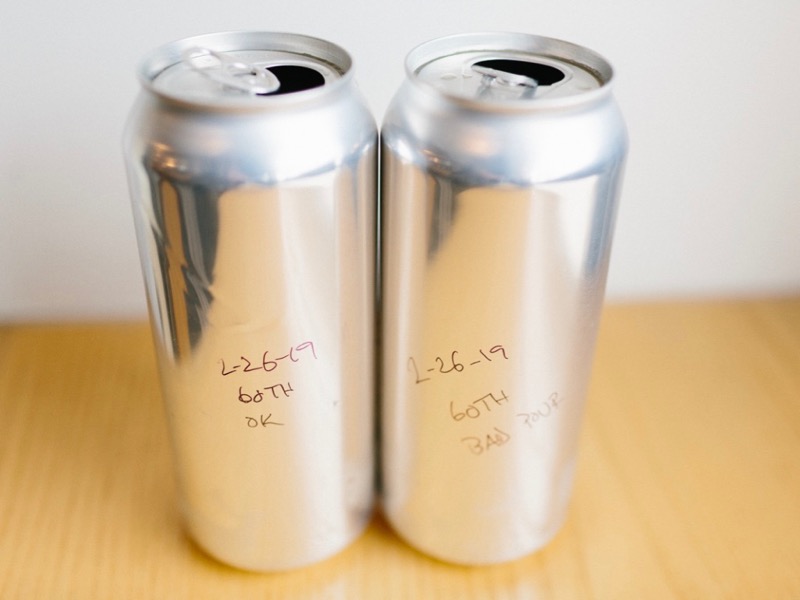
On Feb. 26, 2019, McConico filled two mini-crowlers of Vennture Brew Co.’s 60th St. New England IPA. Both were poured from the tap, but one was poured correctly, held close to the tap and capped on foam. The other was poured from further away, allowing more oxygen to enter the can.
Both cans were seamed and kept under refrigeration for a period of three weeks. Upon opening, we poured the two beers into identical glasses and took a look.
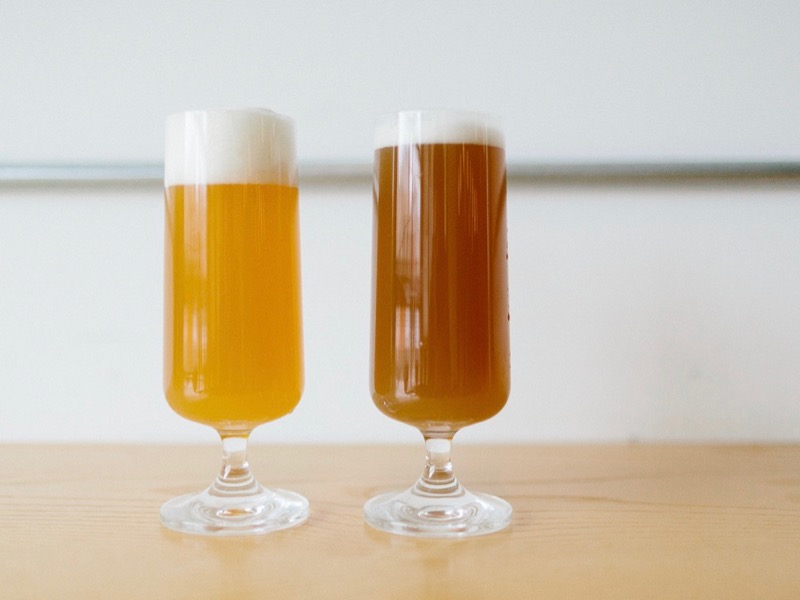
You can see the color difference clearly between the two pours. The beer on the left (the good pour) is bright and hazy, as it should be. Meanwhile, the beer on the right is clearly oxidized, giving it a murky brown coloring.
We also tasted both. Flavor-wise, the beer that was poured correctly exhibited at least a good percentage of the bright citrus and hoppy character expected of the brew. The flavor of the oxidized version, on the other hand, was very muted and slightly more sweet with very little citrus or hops character.
Concluding thoughts
In the end, even crowlers are an imperfect invention. They’re typically not counter-pressure-filled and there’s no re-fermentation process happening which would promote the elimination of oxygen.
A crowler can last a decent amount of time if it is properly flushed with CO2 and has little to no headspace; but you can't assume that every place with a can seamer has employees who know how to do this (though asking questions and watching, when possible, can help).
Your best bet is to heed the instructions generally given: Keep it cold and drink it within a day or two.
Of course, the best option of all is to enjoy your pints at the brewery, where you’ll experience the beer just as the brewer intended.
As a passionate champion of the local dining scene, Lori has reimagined the restaurant critic's role into that of a trusted dining concierge, guiding food lovers to delightful culinary discoveries and memorable experiences.
Lori is an avid cook whose accrual of condiments and spices is rivaled only by her cookbook collection. Her passion for the culinary industry was birthed while balancing A&W root beer mugs as a teenage carhop, fed by insatiable curiosity and fueled by the people whose stories entwine with every dish. Lori is the author of two books: the "Wisconsin Field to Fork" cookbook and "Milwaukee Food". Her work has garnered journalism awards from entities including the Milwaukee Press Club. In 2024, Lori was honored with a "Top 20 Women in Hospitality to Watch" award by the Wisconsin Restaurant Association.
When she’s not eating, photographing food, writing or planning for TV and radio spots, you’ll find Lori seeking out adventures with her husband Paul, traveling, cooking, reading, learning, snuggling with her cats and looking for ways to make a difference.

